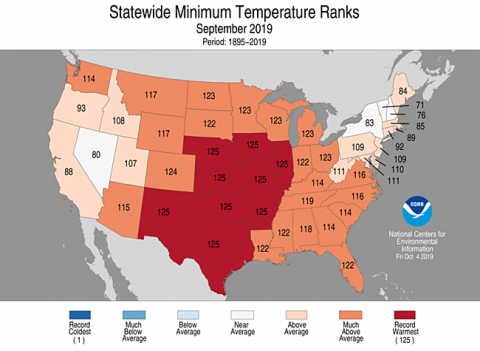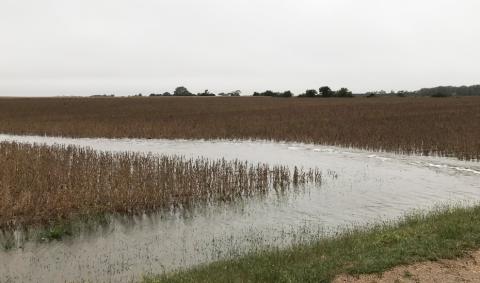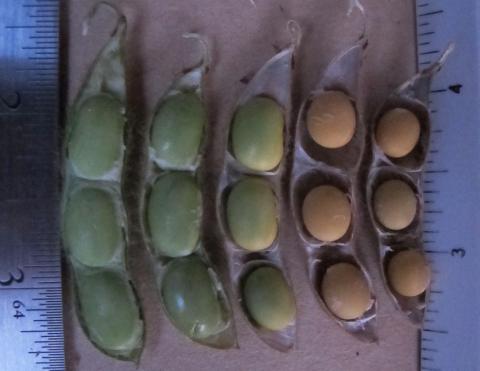And the Weather Hits Just Keep on Coming
October 11, 2019
Warm temperatures and continued precipitation in much of Nebraska in September further complicated crop production. Extremes ranged from 34°F at Harrison to 99°F at Indianola. Highest one-day rain was 4.42 inches at Ainsworth.
Avoiding Harvest Compaction in Wet Soils
October 10, 2019
With wet soils in many areas and heavy harvest equipment, compaction is likely to develop, affecting crop growth in coming seasons. Taking these 10 steps can help reduce compaction this harvest.
Forage Hazards Following a Freeze Event
October 6, 2023
Freezing temperatures cause metabolic and cellular changes to our forage crops — prussic acid formation and nitrate poisoning are the biggest concerns. Learn more about these issues and how to avoid them.
Drying and Storing Expected High-moisture Corn
October 10, 2019
The corn season started late in many areas and is likely to end early with this weekend's lows. How much dry down can you expect to occur in the field and what are the risks of waiting? These recommendations and an online corn dry down calculator from ISU may help with decision-making.
Taking Note of the Ending Reproductive Stages of Your Soybean Crop
August 27, 2020
The heat and drought in areas of the State are rapidly moving Nebraska’s 2020 soybean crop along. Growers have been asking how to determine late season growth stages for last irrigation of the season and for determining maturity.
Projecting Dates for Ending Reproductive Stages of a Soybean Crop Using SoyWater
October 9, 2019
How did the 2019 growing season affect the date of R7 (PM) in soybean varieties differing in MG (1.1 to 4.1) and planting date in eastern Nebraska? Take a look at graphs showing seasonal vegetative (Vn) and reproductive (Rn) development versus calendar date and compare the data with field photos.
Forecast Offers Harvest Hope if Snows Stay North
October 8, 2019
With extended wet conditions this season, every precipitation event going forward has the potential to bring harvest activity to a grinding halt. The big question is how extensive will the delays be. Climatologist Al Dutcher offers good and bad news for some.
"Know Your Numbers, Know Your Options" for Better Informed Decisions
October 8, 2019
Do you have the reliable financial records you need to make important farm management decisions. A new Extension series will help you learn how to record and analyze your data for more informed decision making.








